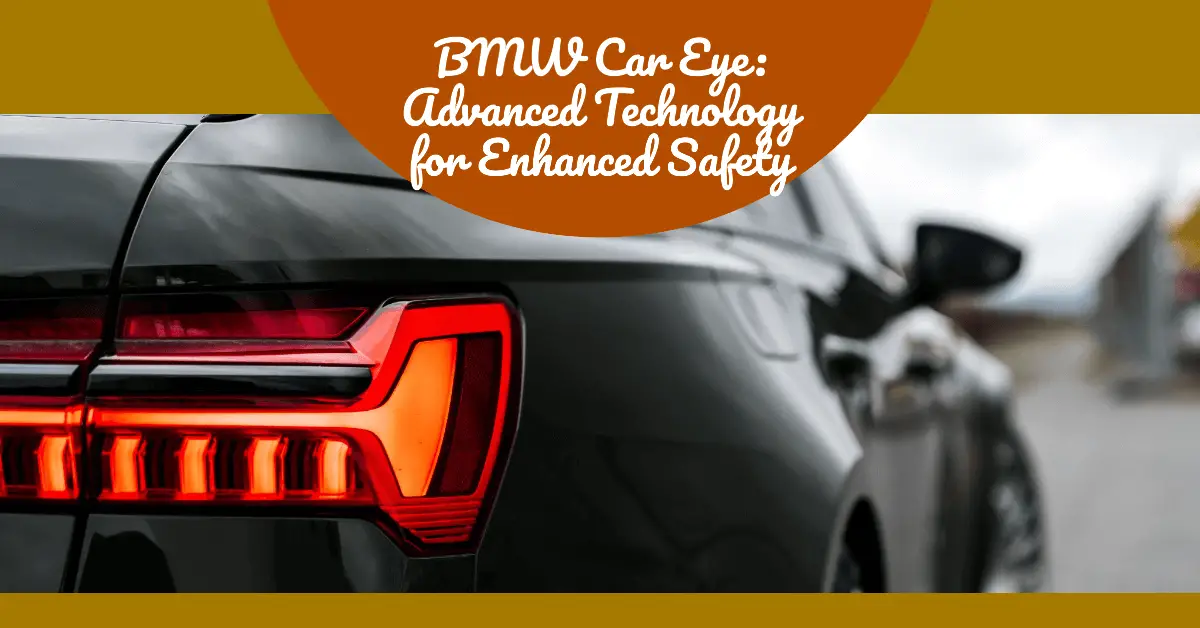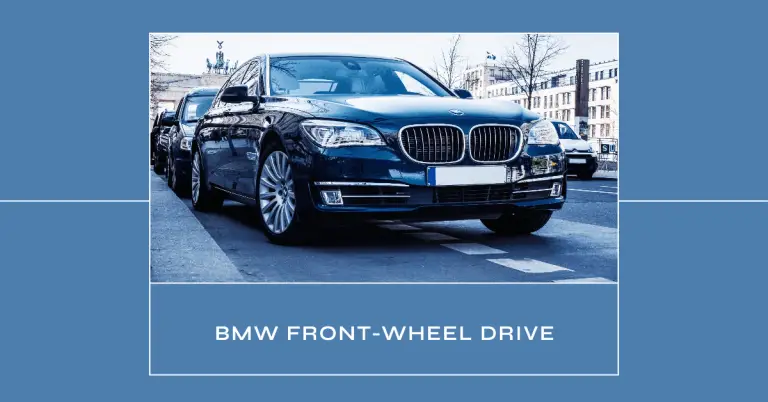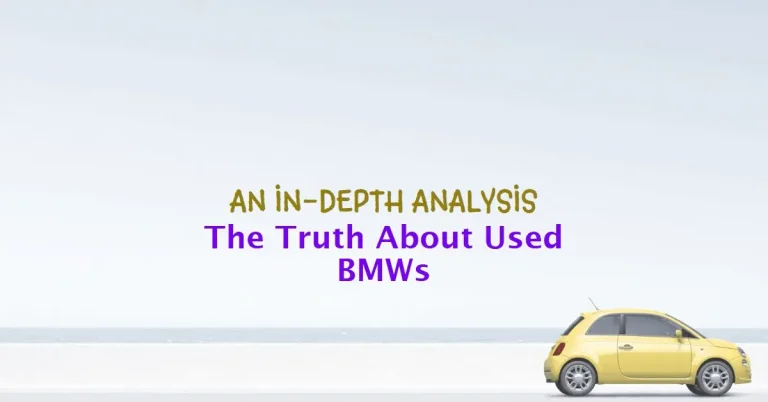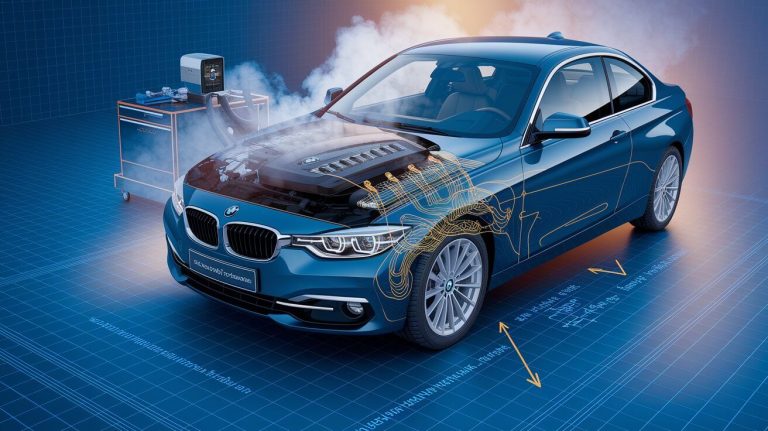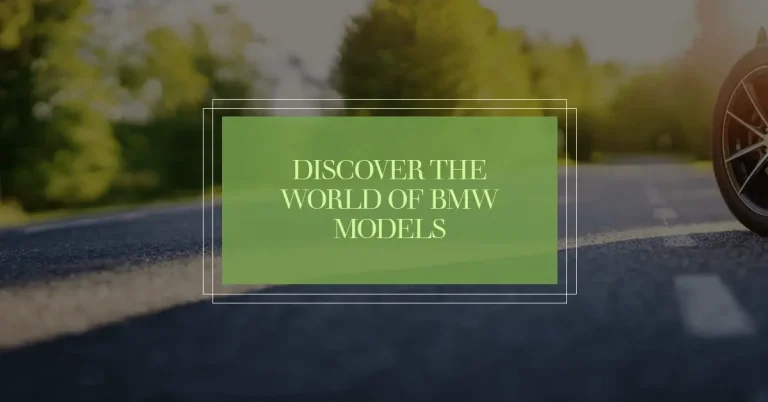BMW Advanced Car Eye: Innovative Technology for Your Car’s Safety
Driver assistance technologies like advanced cruise control, lane keeping assist, and collision avoidance systems are becoming commonplace in modern vehicles. BMW is pushing the envelope with their Advanced Car Eye system, an intelligent driver assistance suite with cutting-edge features. But how exactly does this technology work and what capabilities does it offer drivers?
This in-depth post will explore what makes BMW’s Advanced Car Eye unique. We’ll look at the sensors it uses, dive into the driver assistance features it enables, and discuss how it takes automated driving to the next level. Let’s delve into the technology powering BMW’s Car Eye system.
Overview of BMW Advanced Car Eye System
BMW’s Advanced Car Eye system is an advanced driver assistance system (ADAS) that provides a range of innovative safety and convenience features. It uses a combination of cameras, radar sensors, and ultrasonic sensors to understand the vehicle’s surroundings in 360 degrees. This environmental data allows the Car Eye system to implement intelligent functions like adaptive cruise control, lane keeping assist, self-parking, collision avoidance, and road sign recognition.
Advanced Car Eye represents the latest iteration of BMW’s driver assistance capabilities. It builds upon past systems but expands the technology further towards semi-autonomous driving. While drivers must remain fully attentive and ready to take control, Advanced Car Eye enables smoother, safer driving by automating some of the more mundane or hazardous aspects.
Some of the key capabilities provided by BMW’s Advanced Car Eye system include:
- Assisting with acceleration, braking, and steering to cruise in lane or maintain distance from other vehicles
- Recognizing road signs and setting appropriate vehicle speed
- Finding open parking spaces and automatically steering into them
- Detecting imminent collisions and taking evasive action
- Alerting distracted drivers if they drift out of lane or off road
- Reading traffic conditions and adjusting cruise control accordingly
- Navigating tight turns, exits, highway merges and toll booths
These features demonstrate how Advanced Car Eye aims for more intelligent, human-like driving compared to basic cruise control and lane keeping of past systems. With its comprehensive sensor suite and artificial intelligence, it can handle more complex scenarios. However, BMW stresses that drivers always need to stay alert and engaged, keeping their hands on the wheel. The system is considered Level 2 autonomy, not full self-driving.
Sensors Powering Advanced Car Eye
Advanced Car Eye would not be possible without its array of high-tech sensors continuously monitoring the road. BMW uses a combination of cameras, radar, and ultrasonic sensors to achieve 360 degree environmental awareness. Let’s take a closer look at each:
Cameras
- 12 cameras in total around the vehicle
- Front and side cameras monitor road conditions
- Rear view camera aids with parking/reversing
- Interior camera detects driver attention/distraction
The 12 cameras provide overlapping, panoramic vision around the entirety of the vehicle. Having redundant perspectives on all sides ensures critical driving areas are continually observed from multiple angles. The cameras have high dynamic range and quality to function in challenging lighting conditions like driving at night or towards sun glare. Real-time video feeds are processed by an onboard computer using machine vision algorithms to identify road markings, read signs, detect objects, and more.
Radar Sensors
- 5 radar sensors around front and sides
- Radar provides accurate range and speed data
- Ultrasonic fills in blind spots
To complement the cameras, BMW also equips Advanced Car Eye vehicles with radar technology. This provides precise measurements of distance to and velocity of surrounding objects using radio waves. Having accurate range and speed data is crucial for functions like adaptive cruise control so the vehicle smoothly adjusts speed to maintain a safe gap. The radar sensors have wide fields of view to continuously track multiple vehicles ahead. BMW strategically places radar units around the front and sides of the vehicle to enable long range detection without blind spots. Short range blind spots are covered by…
Ultrasonic Sensors
- 12 ultrasonic sensors around bumpers
- Detect objects within 2-3 meters
- Aid parking and low speed maneuvering
Rounding out the sensor suite are 12 ultrasonic sensors located in the bumpers. As the name implies, these use sound waves to identify objects within a few meters of the vehicle. This makes them ideal for maneuvering in parking lots, handling tight turns, and other low speed situations. The ultrasonic sensors provide close range awareness that cameras and radar miss. Together, the cameras, radar, and ultrasonic sensors give Advanced Car Eye a detailed, real-time view of the full driving environment. This sensor fusion enables advanced capabilities not possible with past driver assistance systems.
Key Driver Assistance Features Enabled By Car Eye
The sensors allow Advanced Car Eye to implement intelligent driver assistance across a range of scenarios. While always requiring driver supervision, the system provides smoother, safer driving in situations from highway cruising to parking. Let’s look at some of the key features:
Lane Keeping Assist
Lane keeping assist uses the front cameras to detect road lane markings. If you start drifting out of your lane unintentionally, perhaps distracted or drowsy, Advanced Car Eye will apply subtle corrective steering to keep the vehicle centered. This helps avoid dangerous lane departures or collisions from leaving the roadway. The system works equally well on straight and curved roads. Advanced Car Eye processes lane lines, shoulder edges, and adjacent vehicles to calculate the proper trajectory.
Adaptive Cruise Control
Standard cruise control only maintains a set speed. BMW’s Advanced Car Eye takes it to the next level with adaptive cruise. Using radars and cameras, it adjusts your speed to keep a safe distance from vehicles ahead. If traffic slows, Car Eye will smoothly decelerate in sync. When the lane clears again, it re-accelerates back to the set speed. This makes driving in varying traffic flow much easier and reduces driver workload. The system works in stop-and-go congestion too, coming to a complete stop then resuming automatically when possible.
Collision Avoidance
Sensors on all sides of the vehicle allow Car Eye to detect potential collisions and take action. Whether a vehicle suddenly brakes ahead or pedestrians step into your path, the system alerts the driver and can even automatically brake in an emergency if the driver does not respond. This can prevent accidents or reduce collision impact, especially useful if the driver is distracted or reacting slowly. Advanced Car Eye considers relative speeds and trajectories of road users in all directions, not just directly ahead like basic systems.
Self Parking
Parallel parking and backing into tight spots can be challenging. Advanced Car Eye takes the stress out by handling the steering during parking. The driver simply needs to operate the gas and brake. Once engaged, the system will identify viable spots, alert the driver, and park itself hands-free. The ultrasonic sensors guide smooth, precise maneuvering into place. This makes parking in busy lots and cities effortless.
Traffic Sign Recognition
Recognizing speed limits, stop signs, and other road signs is an important capability provided by the front cameras. Car Eye uses machine vision to quickly read posted speed limits and adjust your vehicle accordingly. It also alerts you of upcoming stop signs, temporary traffic controls like construction zones, and other regulatory signs. This heightens awareness and safety since drivers can easily miss signage details while focused on the road. Having the vehicle automatically adjust to the proper speed frees up mental workload too.
The wide range of functionality enabled by Advanced Car Eye adds to driving ease and takes stress off the driver. Whether it’s staying centered in lane, adapting speed to traffic, finding parking spaces, or monitoring signs, the system uses environmental sensors and AI to handle mundane tasks. This leaves the driver to focus on the big picture. However, BMW emphasizes that drivers always need to remain alert and never treat the vehicle as fully autonomous.
How Car Eye Enables Semi-Autonomous Driving
The comprehensive capabilities packed into BMW’s Advanced Car Eye system represent a major step towards autonomous driving. It provides level 2 autonomy, meaning it can steer, accelerate, and brake automatically in certain scenarios but requires human oversight at all times. How exactly does Car Eye take automated driving a level beyond past driver assistance features?
- Longer Hands-Free Operation – Car Eye allows drivers to go longer durations with hands off the wheel, thanks to smooth lane centering and adaptive cruise features. However, drivers must still regularly touch the wheel to confirm they are paying attention.
- Complex Maneuvers – Car Eye can navigate tighter turns, highway interchanges, and intersections that overwhelm basic systems. This expands the scenarios and roads where drivers can rely on automation assistance.
- Better Sensor Fusion – The combo of vision, radar, and ultrasonic sensors provides detailed environmental data for informed decision making. Car Eye integrates input from these sensors in real-time.
- More Natural Driving – Car Eye follows surrounding vehicles and adjusts speeds in a more natural, human-like fashion compared to basic adaptive cruise control. This improves passenger comfort.
- Driver Monitoring – The interior camera monitors driver attention. Car Eye alerts distracted or drowsy drivers and can bring the vehicle to a safe stop if the driver becomes unresponsive.
- Future Expansion – Since the system is software based, BMW can improve capabilities over time through over-the-air updates. Already, enhanced versions of Car Eye are rolling out to take automated driving even further.
Advanced Car Eye moves BMW towards their vision of highly automated vehicles. But it’s important to remember that this represents only partial autonomy. Drivers cannot abdicate all responsibility to the system and must stay engaged. There are still limitations to Car Eye like:
- Cannot drive everywhere or in all weather
- Still requires human oversight
- Not capable of full self-driving
- Driver needs to be ready to retake control immediately
The technology has come very far but is not full automation yet. As BMW expands the system’s capabilities going forward, they face challenges of boosting AI intelligence, operating safely, and ensuring human drivers pay attention. Consumer education will be critical so people properly understand the technology’s benefits and current limitations.
Future Outlook for BMW Advanced Driver Assistance
BMW makes it clear Advanced Car Eye represents only an intermediate point in their automation roadmap. The flexible sensor-based system will continue evolving new capabilities through software updates. BMW is already testing enhanced versions that expand self-driving scenarios further. Where might the technology be headed next?
- More Driver Delegation – Future iterations could take over more driving responsibility in limited contexts like highway travel. Drivers may no longer need to touch the wheel as often.
- Parking and Summoning – BMW envisions cars that can find parking spaces, park themselves remotely, and even autonomously drive to summon the vehicle to your location. Advanced Car Eye lays the sensor foundations.
- Full Autonomy in Select Conditions – With greater sensing and intelligence, upcoming BMW systems may achieve full self-driving but only in mapped urban areas in fair weather. Challenging conditions would still require human drivers.
- Driverless Capability – Well into the future, Advanced Car Eye could evolve capabilities to potentially drive everywhere without human oversight by achieving full level 5 autonomy. This remains a long-term goal facing major technical hurdles.
- Infrastructure Integration – Future vehicles will likely connect to smart infrastructure for traffic alerts, signal phase and timing data, and other travel coordination. Car Eye could integrate this for safer, smoother operation.
- Enhanced AI Capabilities – As machine learning continues rapidly advancing, BMW’s automation will become smarter. Deep neural networks will enable vehicles like those with Advanced Car Eye to confidently handle novel road situations. Human-like reasoning and decision making gets closer to reality.
For now, BMW is focused on gradually enhancing driver assistance features while ensuring people stay engaged and understand the technology’s current boundaries. Education, smart design and incremental testing will lead to consumer acceptance as more self-driving capabilities emerge. What seems like science fiction today could very well become everyday reality thanks to innovations like BMW’s Advanced Car Eye system.
Conclusion
In closing, BMW’s Advanced Car Eye system clearly represents a major step forward for intelligent driver assistance. Its array of cameras, sensors and software provides functionality not seen in past BMW models. While still requiring an attentive driver, Advanced Car Eye points to a future of more automated driving experiences. BMW will likely continue expanding the technology’s capabilities through over the air updates.
It’s an exciting development for the brand and industry overall that shows the accelerating pace of innovation in self-driving vehicles. Drivers today can experience a glimpse of the automotive future with Advanced Car Eye’s automated features. But they must exercise patience and realistic expectations until self-driving systems reliably handle all complex scenarios on their own. With BMW’s thoughtful development approach, that future could arrive sooner than expected.

